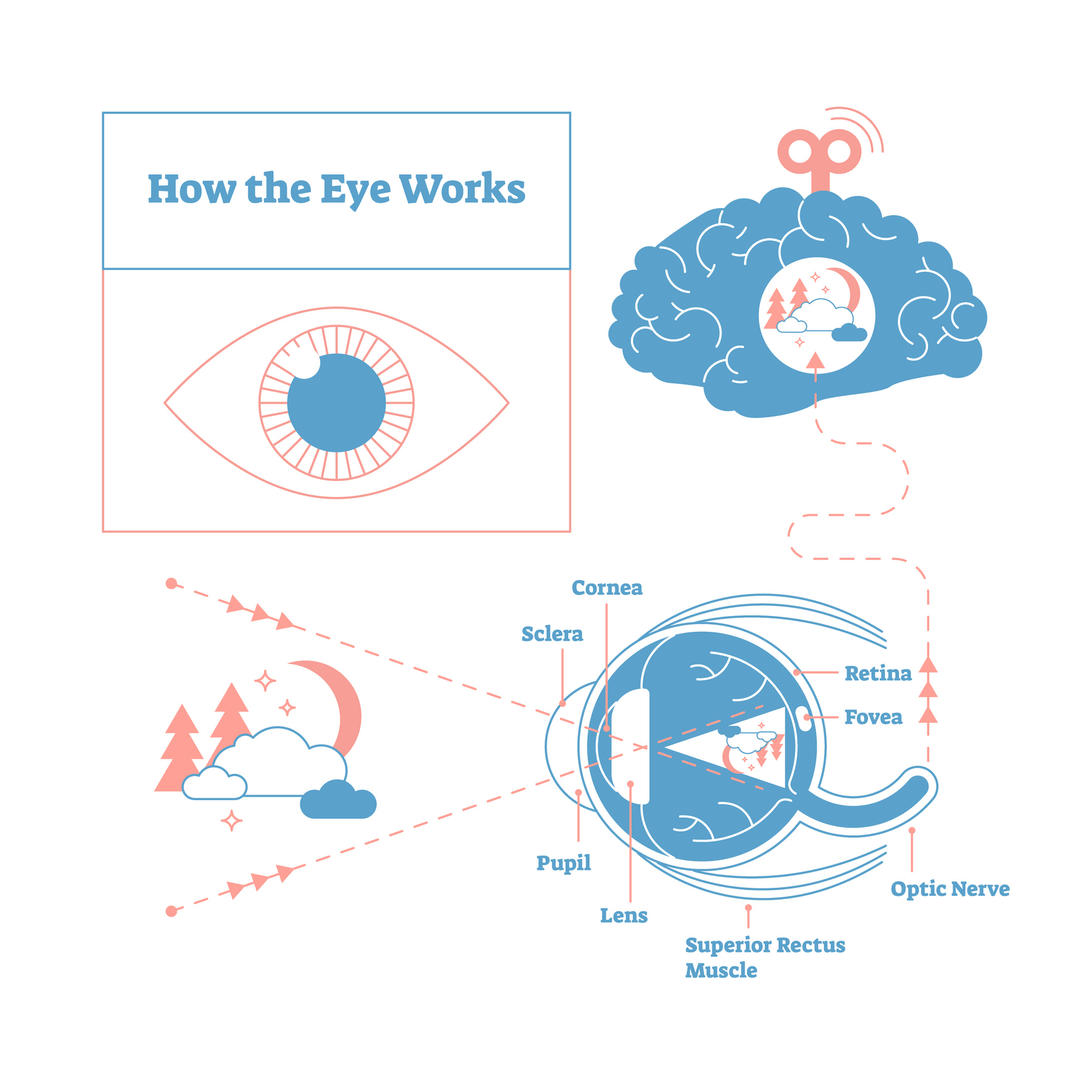How Eyes Really Work
Posted on
Most people don’t know how their eyes really work. In simple terms, your vision is really your eyes processing light – your brain then translates the light into pictures and visualization! In a number of ways, the human eye works similar to a digital camera. Ready to break it down? Check out the process:
- First, light is focused primarily by the cornea, the clear front surface of the eye, which acts like a camera lens.
- Then, the iris of the eye functions like the diaphragm of a camera, controlling the amount of light reaching the back of the eye by automatically adjusting the size of the pupil.
- The eye’s crystalline lens is located directly behind the pupil and then further focuses light. Through a process called accommodation, this lens helps the eye automatically focus on near and approaching objects, like an autofocus camera lens.
- Light focused by the cornea and crystalline lens reaches the retina, the light-sensitive inner lining of the back of the eye. The retina acts like an electronic image sensor of a digital camera, converting optical images into electronic signals.
- The optic nerve then transmits these signals to the visual cortex, the part of the brain that controls our sense of sight.
Through this detailed process, you are able perceive the beauty of the world within your eyesight. How amazing!
